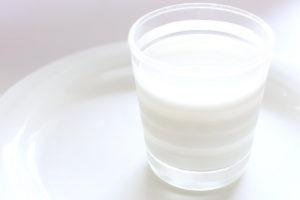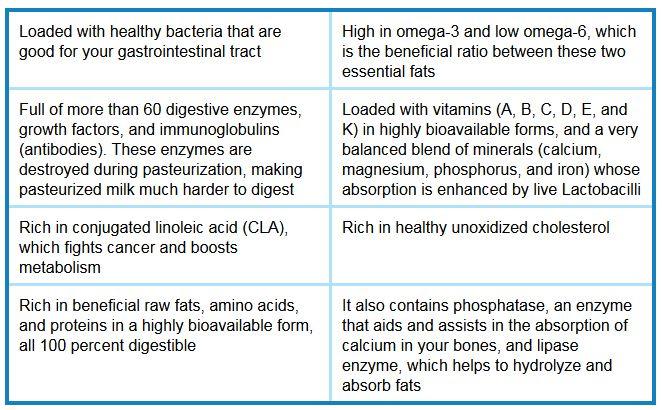 There are lots of reasons to opt for organic – health-focused, environmental, social and political. For one, it limits your exposure to pesticide and drug residues.
There are lots of reasons to opt for organic – health-focused, environmental, social and political. For one, it limits your exposure to pesticide and drug residues.
Yes, drugs. That’s because livestock raised in extremely crowded conditions – as on industrial feedlots (CAFOs) – are routinely fed antibiotics, hormones and other drugs to both boost production and control the disease that runs rampant in such conditions. Traces of those substances turn up in the harvest of meat, eggs and dairy alike.
Several years ago, the FDA launched an investigation into drug residues in dairy products, though it has yet to issue any results. Why dairy?
When dairy cows are no longer productive, they can be slaughtered for meat. That’s when inspectors find drug residues.
Historically, dairy cows have had more drug residues, so they’re more likely to be tested than most other animals.
In the past five years, dairy cows accounted for one-third of the drug violations found in animal tissues, federal data show. That’s despite the fact that they typically represent less than one-tenth of 1 percent of animals slaughtered each year.
Even though a dairy farm can produce both meat and milk, its products are tested separately by different bodies. When regulators find residues in animals, the carcasses are destroyed and the farm can be barred from selling more animals, but milk from the same farm still can be sold.
“They don’t take the logical next step, which would be, why don’t you look at the milk?” said David Plunkett, senior staff attorney for food safety at the Center for Science in the Public Interest, a consumer advocacy group. “If they’ve got a problem with the dairy animals they’re sending to slaughter, it’s very likely they’re having a problem managing all the drugs for their dairy animals.”
Certified organic livestock, on the other hand, can receive a limited number of drugs, but they can’t be used routinely as in CAFOs – making organic the safer choice in this regard.
Nutritionally, it can be a different story. Much of the organic milk you see in major chain stores gets there via large suppliers like Horizon. Ultra-pasteurization is the norm. This heating process is intended to kill pathogens in food products, as well as extend “shelf life.” (What makes it “ultra” is 100 degrees of extra heat compared to standard pasteurization.) Unfortunately, it kills a lot more than that. Like a broad spectrum antibiotic, pasteurization doesn’t discriminate between health-promoting and disease-causing bacteria. A lot of “good guys” are destroyed in the process – and not just bacteria, either, but enzymes, vitamins and more.
In short, the life – and much of the nutrition – is taken out of it. What does real milk – unpasteurized, raw – look like? This chart from Dr. Mercola gives a snapshot:
If you routinely check out holistic, natural health sites, you may be familiar with all manner of claims about raw milk being a “healing” food, “curing” or at least offering relief from any number of chronic health conditions in children and adults. It’s not that raw milk is magic. It does have two critical benefits: 1) It lacks the harmful substances found in conventional pasteurized milk; and 2) It’s more nutritionally dense and complete.
But is it safe?
Despite all the hand-wringing and concern voiced by public health officials and others, raw milk is in fact an incredibly safe food – more so than hyper-processed products and even packaged produce (in which food from multiple crops on multiple farms may be mixed in a single bag or box, raising the risk of cross-contamination). Consider: The CDC estimates that 1 in 6 Americans contract some kind of foodborne illness each year. Nearly 130,000 are hospitalized. About 3000 die. Here in Texas, over a 14 year span (1998 – 2012), there were only 6 reported illnesses attributed to raw milk. There were 19,500 attributed to other foods.
It’s not clear why raw milk gets singled out as a threat. As analysts at Economics21 have pointed out, the government shows absolutely no concern over the sale of another raw food that may be considered risky: sushi.
Currently, the federal government has no regulations concerning which fish can receive the designation of “sushi grade,” meaning it is expected to be consumed raw. In other words, a gas station vendor could buy low-grade fish from the nearest waterfront and label it “sushi grade.” But people would be hesitant to purchase raw fish from a gas station that they do not trust. Further, a business will not stay open for long if it disappoints its customers, much less if it makes them seriously ill by selling tainted food.
Without being told by the government to do so, stores tend to reserve the best quality, cleanest fish for the label “sushi grade.” These sales operate without regulation and without sacrificing public health. Companies selling raw milk likewise regulate their own products in a manner that protects the health of their consumers. Ten states allow retail sales of all types of raw milk, and more allow on-farm sales. Despite warnings from the FDA, there is no massive public health crisis in the states that allow consumption of raw milk, compared to those that do not.
Currently in Texas, we can buy raw milk directly from farms, but legislation has again been introduced that would expand on that. If passed, HB 91 would let farmers sell grade A raw milk directly to consumers at farmer’s markets, as well as in consumer homes. According to the Farm and Ranch Freedom Alliance, there are several key benefits to this legislation:
- [It] improves the safety of raw dairy by allowing producers to transport it to consumers under safe conditions, rather than relying on consumers to remember to take coolers and ice.
- By allowing a producer to make a single trip to serve multiple customers, rather than having each customer drive to the farm, the bill reduces vehicle miles, benefiting air quality, traffic congestion, and public safety.
- Benefits rural economies because direct farm-to-consumer sales of raw milk can mean the difference between a net loss on the farm and a reasonable income for the farm family.
- Improves legal access to raw milk, thereby reducing the likelihood that consumers will buy from unregulated and illegal sources, as is currently happening.
If expanding access to wholesome, natural foods is important to you, we encourage you to contact your representative and make your voice heard. The Farm and Ranch Freedom Alliance provides all the info and resources you need to know in order to take action.
To learn much more about raw milk benefits and safety, visit the Weston A. Price Foundation’s Campaign for Real Milk.
Image by rosipaw, via Flickr
